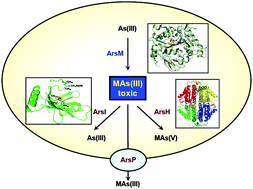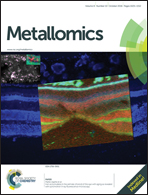The organoarsenical biocycle and the primordial antibiotic methylarsenite
Abstract
Arsenic is the most pervasive environmental toxic substance. As a consequence of its ubiquity, nearly every organism has genes for resistance to inorganic arsenic. In bacteria these genes are found largely in bacterial arsenic resistance (ars) operons. Recently a parallel pathway for synthesis and degradation of methylated arsenicals has been identified. The arsM gene product encodes the ArsM (AS3MT in animals) As(III) S-adenosylmethionine methyltransferase that methylates inorganic trivalent arsenite in three sequential steps to methylarsenite MAs(III), dimethylarsenite (DMAs(III) and trimethylarsenite (TMAs(III)). MAs(III) is considerably more toxic than As(III), and we have proposed that MAs(III) was a primordial antibiotic. Under aerobic conditions these products are oxidized to nontoxic pentavalent arsenicals, so that methylation became a detoxifying pathway after the atmosphere became oxidizing. Other microbes have acquired the ability to regenerate MAs(V) by reduction, transforming it again into toxic MAs(III). Under this environmental pressure, MAs(III) resistances evolved, including the arsI, arsH and arsP genes. ArsI is a C–As bond lyase that demethylates MAs(III) back to less toxic As(III). ArsH re-oxidizes MAs(III) to MAs(V). ArsP actively extrudes MAs(III) from cells. These proteins confer resistance to this primitive antibiotic. This oscillation between MAs(III) synthesis and detoxification is an essential component of the arsenic biogeocycle.

- This article is part of the themed collection: Metallomics Recent HOT articles

 Please wait while we load your content...
Please wait while we load your content...